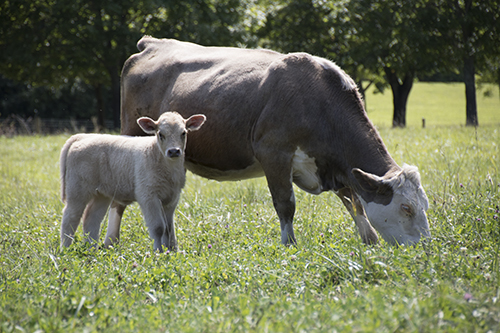
The days of $500 day-old bull calves are probably gone for some time.
Lower milk prices aren't the only disappointing news forecast for dairy producers in 2016. Foreign imports and continued rebuilding of the nation's beef herds mean that the weaker prices they have already seen for cull cows and bull calves will likely continue.
After hitting a 62-year low in 2013, total U.S. beef cow numbers grew by 1 percent in 2014 as cattlemen began retaining calves and heifers to raise for market. That expansion has continued in 2015. Those retained animals will begin reaching slaughter weight in 2016, increasing market supplies of beef and putting more downward pressure on prices.
Supplies have already been increasing due to rising beef imports from major international suppliers like Australia and New Zealand, in response to record-high prices in the U.S. and continued strength of the dollar versus other global currencies.
Purdue University Agricultural Economist Chris Hurt has called the rebuilding of the nation's beef herd the biggest expansion in 25 years, which isn't real surprising because its starting point is that 62-year low.
But while beef cow numbers are on the rebound, they are not expected to return to anywhere near the 35 million-plus head levels seen in the mid-1990s.
The Food and Agricultural Policy Research Institute (FAPRI) at the University of Missouri has forecast that beef cow numbers, which dipped to just over 29 million head in 2013-14, will peak at around 31.5 million in 2018-19 during the current expansion cycle, about the same as in 2010. It predicts they will then slowly decline through 2024.
The takeaway message for dairy producers is that while the extraordinary prices they have seen for cull cows and bull calves in recent years is over, they will likely remain strong compared to prices seen a decade ago.
(c) Hoard's Dairyman Intel 2015
November 23, 2015








